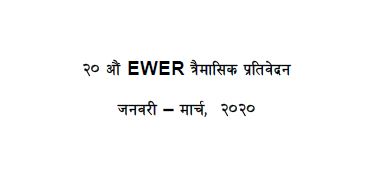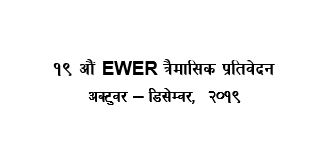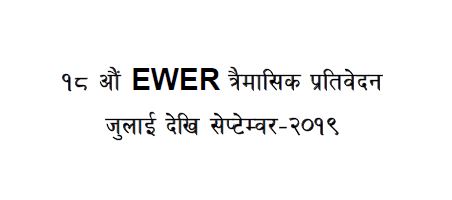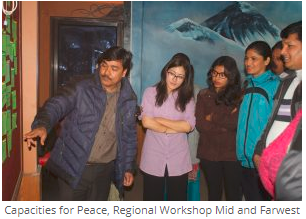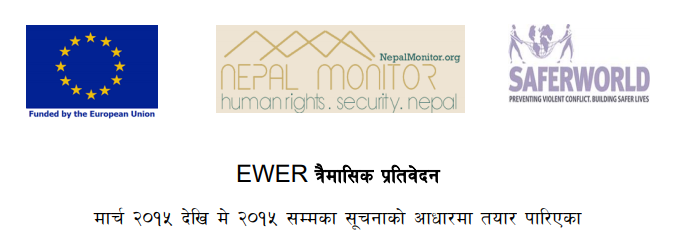Incident Reports
Still waiting for the truth- Tula Chaudhari's and Om Astha Rai's Oped on Transitional Justice
2016-09-23
A decade after the end of the conflict in Nepal, the perpetrators of war crimes want to bury the truth while the families of victims are still trying to dig it out.
Prime Minister Pushpa Kamal Dahal was the commander of the Maoist militia and faces dozens of charges of wartime excesses. His coalition partner Sher Bahadur Deuba of the Nepali Congress used to be prime minister for most of the war years and is also charged with human rights violations. The updated list of missing persons published by ICRC
Dahal and Deuba now both agree that raking up the past will endanger the peace process. Which is why neither is serious about empowering transitional justice bodies set up last year. They have ensured that the Truth and Reconciliation Commission (TRC) and the Commission for the Investigation of Enforced Disappeared Persons (CIEDP) have weak mandates.
If it wasn’t for a Supreme Court verdict, there would probably have been law by now granting blanket amnesty and pardons for perpetrators of war crimes. The CIEDP drafted a law last year to criminalize enforced disappearances, but the government ignored it. Without a strong law, even if the real truth about what happened to the disappeared comes out no action can be taken against perpetrators.
“The truth is the first thing that we want, but we also want the guilty punished,” says Bhagi Ram Chaudhary of the National Network of Families of Disappeared and Missing Nepal. Chaudhary is from Bardiya which saw 258 of the 1,334 listed as disappeared by an International Committee of the Red Cross (ICRC) report.
“The Commission is not free and impartial. It is merely a political tool to protect Dahal, Deuba, and their partners in crime.”
His brother Chaite Lal and his wife Sita Janaki Chaudhary were disappeared by the army during the Deuba government in 2001. “We want the truth about our disappeared family persons so we can perform their final rites, we want the truth also because without it we cannot see justice,” he says. CIEDP spokesperson Bishnu Pathak says his agency cannot do much with the limited mandate, time and resources. But the families of the disappeared say money is not the issue, it is the lack of political will.
Says Chaudhary: “The Commission is not free and impartial. It is merely a political tool to protect Dahal, Deuba, and their partners in crime.”
-Om Astha Rai
For years after her son was disappeared by the army, Ramkrishni Chaudhary used to look out every time a vehicle approached her mud house. She had held on to the hope that her son was alive, and would come home someday. Not anymore.
She is now hard of hearing, but that is not why she has stopped looking out at cars on the road. She has lost hope that her son, Bhaban Chaudhary, is still alive.
“He would not have kept me waiting for so long, he was a responsible boy and always cared for his family,” she says, eyes brimming with tears.
In September 2002, seven young men from Motipur village, including Bhaban, were on their way to India in search of jobs. They were stopped by an army patrol near the border. Ramkrishni Chaudhary thought her son had already crossed over to India. Four days later, she heard from villagers that Bhaban and his friends were detained at the Chisapani Army base.
Bhaban was 25 then, a quiet and hard-working man and not a Maoist. He just wanted to escape the violence and support his pregnant wife, aging parents, and younger siblings. After his disappearance, his wife gave birth to a daughter who is now 14 and has never seen her father. Bhaban’s younger brother dropped out of school to support the family.
Chaudhary and the mothers of six others who disappeared searched for their sons and finally learned that they were kept at the Chisapani base. But the army denied they were there.
One of the men detained along with Bhaban was released because his relatives were in the Army, and that is how Chaudhary knows that her son was at the Chisapani Base. He said they had been tortured, sometimes with sacks of rice piled on top of them on which soldiers sat.
In 2004, under pressure from the National Human Rights Commission, the Army finally admitted that three of the six detainees were “killed in an encounter”. But it refused to say anything about the other three, including Bhaban.
Through the years that followed, Chaudhary kept up her struggle to find her son. Borrowing money from villagers, she traveled to Chisapani many times to ask the Army to either release her son or show her the spot where he might be buried.
Once, she even took Bhaban’s clothes to Chisapani and asked the soldiers at the gate to give them to him. The soldiers replied that they would set fire to his clothes and that he was not with them. Those clothes, a few photographs, and her son’s citizenship certificate are the only reminders left of her son.
Journalist Rameshwar Bohara’s photograph of a distraught Ramkrishni Chaudhary holding up her son’s citizenship card became one of the representative images of the plight of the families of the disappeared in the war. It was one of the pictures included in the A People War trilogy of photobooks on the conflict.
“Until I took this photo, no one knew that so many Tharu youths had been disappeared by the army in Bardiya,” says Bohara. “So this photo exposed the extent of enforced disappearances in this district, and prompted the National Human Rights Commission to look into the matter.”
Early this year, Chaudhary finally registered a case at the Commission for the Investigation of Enforced Disappeared Persons (CIEDP), one of the two transitional justice bodies set up nearly a decade after the end of the war. She wants the Commission to find out why Bhaban was detained, where and how he was tortured and what happened to him at the end.
“I am old, ill and I don't have much time,” she says. “I want to know before I die where my son is. If he was killed, what happened to his body?”
Tula Chaudhary
Fourteen years have gone by and Chaudhary still does not know of his whereabouts.
But there is not much hope that the short-staffed CIEDP with its limited mandate and resources will be able to find out the truth. With more than 200 people disappeared, Bardiya had the most reported disappearances during the conflict. Most of them, like Bhaban, were young men from the Tharu community detained by the Army for interrogation and never heard from again.
The notorious Chisapani Barrack and posts set up to guard the Bardiya National Park were used in the Army’s counter-insurgency operations for detention, torture, and executions. Bhaban's father, Amrit Lal Chaudhary, worked as a Kamaiya - bonded farmer - but was lucky to be freed even before the slave tradition was abolished in 2000. Bhaban and his brothers, therefore, did not have to work as Kamaiyas.
Bhaban's younger brother, Thaggu, says his brother's disappearance cost the family dearly. “He worked so I could go to school, but with him gone I had to leave my studies,” he says. Thaggu goes to India once in a while to earn money but mostly supports his parents on the farm.
The government has given a compensation of Rs 400,000 to Bhaban's family. But Ramkrishni Chaudhary has not been able to spend this money because it is deposited in a joint account with Bhaban’s daughter, and can only be taken out when she turns 16 in two years. “The money is for my granddaughter’s future,” Ramkrishni Chaudhary says. “As for me, I just want to know what happened to my Bhaban.”
National/Online Media
Related Reports
Transitional Justice / Conflict Victims / Kathmandu
Demonstration staged demanding to rectify TRC bill
August 04, 2023
Transitional Justice / Conflict Victims / Kathmandu
Conflict victims, police clash at New Baneshwar
April 18, 2023
Transitional Justice / Conflict Victims / Kathmandu
Police detain protesting armed conflict survivors in Kathmandu
April 18, 2023
Transitional Justice / Conflict Victims / Kaski
Conflict victims stage sit-in in Kaski demanding to make transitional justice bill victim friendly
March 31, 2023
Transitional Justice / Conflict Victims / Kathmandu
Conflict victims stage demonstration in Kathmandu demanding honorable justice
August 15, 2022
